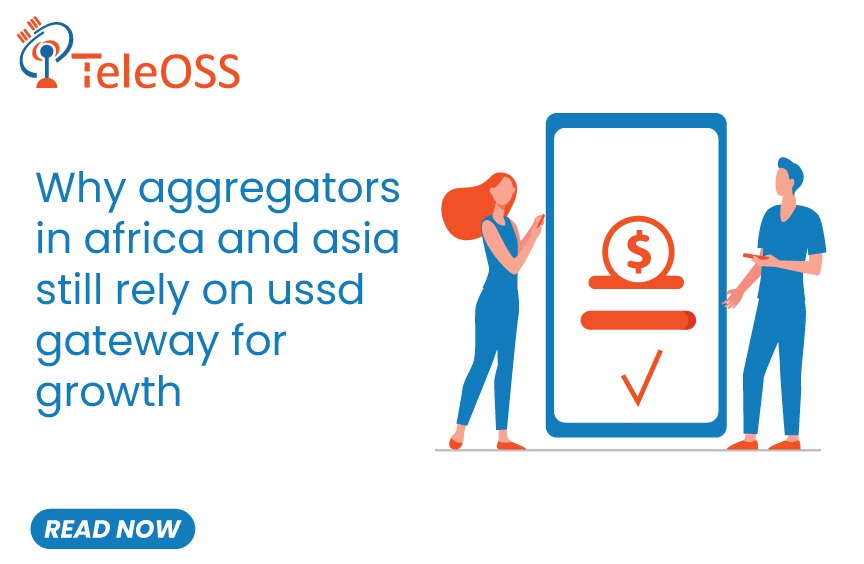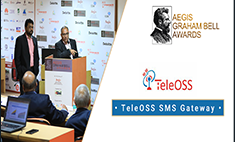In the age of smartphones and high-speed internet, it may seem surprising that Unstructured Supplementary Service Data (USSD) remains a vital technology in regions like Africa and Asia. This simple text-based communication protocol continues to be a leading player in the growth space, in bridging the digital divide, and unleashing important services to millions of people.
What is USSD?
USSD (Unstructured Supplementary Service Data) is a session-based communication technology used by mobile phones to interact directly with a service provider’s computers. It allows users to send and receive information through short codes, such as *123#, without requiring an internet connection or a smartphone.
While SMS is a store-and-forward service, which means that there is a stop on a server before the message is delivered, a USSD Gateway initiates a real-time, two-way communication session between a user’s mobile device and a service provider’s backend process. This “active” interaction makes USSD quite a bit faster, more responsive, and is preferred for urgent tasks, such as checking bank balances, topping up airtime, or confirming payments without the need for an internet connection.
USSD sessions typically last a few minutes, during which users navigate through menu-driven options. This makes it ideal for structured services like:
- Mobile banking and money transfers
- Balance inquiries and mobile top-ups
- Bill payments
- Government subsidy distribution
- Healthcare appointments and alerts
- Access to agricultural information (market rates, weather forecasts)
The Mobile Reality in Africa and Asia
People in Africa and Asia still use feature phones, or are limited by: Despite the growth of the mobile internet skimming the surface, large portions of the populations in Africa and Asia operate using feature phones or are limited by:
- High smartphone costs
- Limited 3G/4G coverage in rural areas
- Expensive mobile data plans
- Low digital literacy rates
According to GSMA, over 40% of mobile connections in Sub-Saharan Africa are still on 2G networks. Similarly, parts of South and Southeast Asia continue to experience digital inequality. USSD bridges this gap by enabling essential services without needing internet access.
Why Aggregators Still Depend on USSD
1. Universal Accessibility
USSD works on all mobile phones, no app, no data plan, no internet required. Aggregators effectively leverage this low-tech yet powerful tool to reach the widest possible audience, including unbanked and underbanked users in rural or economically disadvantaged areas across diverse geographies.
2. Affordable Transactions
USSD is highly cost-effective for both users and service providers. For populations that are price-sensitive, especially in emerging markets, this low-cost and infrastructure-light nature of USSD ensures broader reach and significantly higher adoption rates over time.
3. Financial Inclusion & Mobile Banking
In both Africa and Asia, USSD is the backbone of many mobile money services. Platforms like M-PESA in Kenya, bKash in Bangladesh, and GCash in the Philippines have heavily relied on USSD technology to serve millions of users, particularly in areas where traditional banking infrastructure is limited or entirely out of reach. Its simplicity, reliability, and offline functionality make it indispensable for financial inclusion.
4. Simplicity and Speed
The text-based interface may seem outdated, but it is straightforward, fast, and highly reliable. This simplicity enables users with low literacy levels or minimal tech experience to confidently perform essential tasks such as checking balances, sending money, paying bills, or accessing government schemes quickly and efficiently.
5. Regulatory Support
In many countries, Governments and telecommunications regulators actively promote USSD-based services for purposes including financial inclusion, health alerts, subsidy distribution, public information, and so on. Aggregators often work with telcos to build and scale services to support national development objectives, thereby helping bridge the digital divide and facilitating access to essential services for under-served/underrepresented groups.
Key Sectors Powered by USSD
- Mobile Money & Banking: Transfers, withdrawals, micro-loans, savings
- Telecom Services: Airtime recharge, data purchase, plan selection
- Healthcare: Appointment booking, vaccine registration, health tips
- Agriculture: Weather updates, market prices, farming tips
- Government Programs: Welfare schemes, ID verification, utility payments
The Future of USSD: Is It Still Relevant?
While smartphone adoption is rising, USSD isn’t going away soon. Instead, it continues to evolve. Aggregators are now integrating USSD Gateways with backend APIs, enabling hybrid models where USSD handles the front-end user interaction, while the internet manages data-heavy processes in the background. This kind of USSD integration allows for scalable and secure communication workflows, especially in mobile banking, healthcare, and government services.
Additionally, modern USSD applications are being combined with AI-driven IVR systems, voice commands, and even WhatsApp bots to offer multi-channel service layers ensuring inclusivity across varying levels of digital access and device capability.
Final Thoughts
USSD may not be glamorous, but its impact is profound. For aggregators in Africa and Asia, it’s a strategic tool not just a legacy protocol. As long as digital inequality exists, USSD will remain a vital growth enabler, helping businesses reach the last mile and empowering underserved communities.
With TeleOSS, aggregators can harness the full power of USSD to deliver seamless, secure, and scalable services bridging digital gaps and driving inclusive growth across Africa and Asia.


